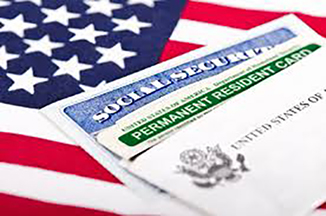By NAN Staff Writer
News Americas, NEW YORK, NY, Tues. Jan. 2, 2023: Immigrants seeking adjustment of status and other immigration services from The U.S. Citizenship and Immigration Services, (USCIS), will likely shell out more in fees this year.
USCIS today announced the proposed fee raises. It includes a more than 30% increase for several family-based petitions, a 101% increase for removal of condition applications, and separate fees for the optional work and travel permit forms, which have long been free to file as part of the green card application.
Under the new fee structure of I-485, the costs for applying to turn a temporary visa into permanent residency — also known as a green card — would increase. Individuals who seek to adjust their status alone would pay an application fee of $1,540, up from $1,225, and those wanting to apply to travel and work while they wait would pay $2,820. Currently, immigrants only pay one lump fee. The administration is trying to return to previous policy which allowed people to pay for benefits they sought, such as traveling or working while waiting for permanent residency.
New measures include a proposal to incorporate biometrics costs into the main benefit fee and remove the separate biometric services fee; establish separate fees for each nonimmigrant classification covered by Form I-129, Petition for a Nonimmigrant Workers; change the premium processing timeframe from 15 calendar days to 15 business days; and institute lower fees for certain forms filed online.
People who apply for EB-5 visas, which are available to those who invest large sums of money in the U.S., would face massive price jumps as well. Application fees for these visas would jump from $3,675 to $11,160, an increase the agency believes is necessary to pay for the extra time it takes to process them.
The proposed rule would not change fee waiver eligibility requirements. The projected revenues resulting from the proposed rule would allow USCIS to increase the number of adjudicators processing applications, implement technology improvements, and increase support provided to individuals seeking information and assistance from USCIS.
USCIS says fee increases are needed “to more fully recover its operating costs, reestablish and maintain timely case processing, and prevent the accumulation of future case backlogs.”
USCIS receives approximately 96 percent of its funding from filing fees, not from congressional appropriations. If finalized, the proposed rule would decrease or minimally increase fees for more than one million low-income filers each year.
“In addition to improving customer service operations and managing the incoming workload, USCIS must continue to fulfill our growing humanitarian mission, upholding fairness, integrity, and respect for all we serve,” said USCIS Director Ur M. Jaddou. “This proposed rule allows USCIS to more fully recover operating costs for the first time in six years and will support the Administration’s effort to rebuild the legal immigration system.”
The 60-day public comment period starts following publication of the NPRM in the Federal Register. Fees will not change until the final rule goes into effect, after the public has had the opportunity to comment and USCIS finalizes the fee schedule in response to such comments. USCIS will host a public engagement session on the proposed fee rule on January 11, 2023.










